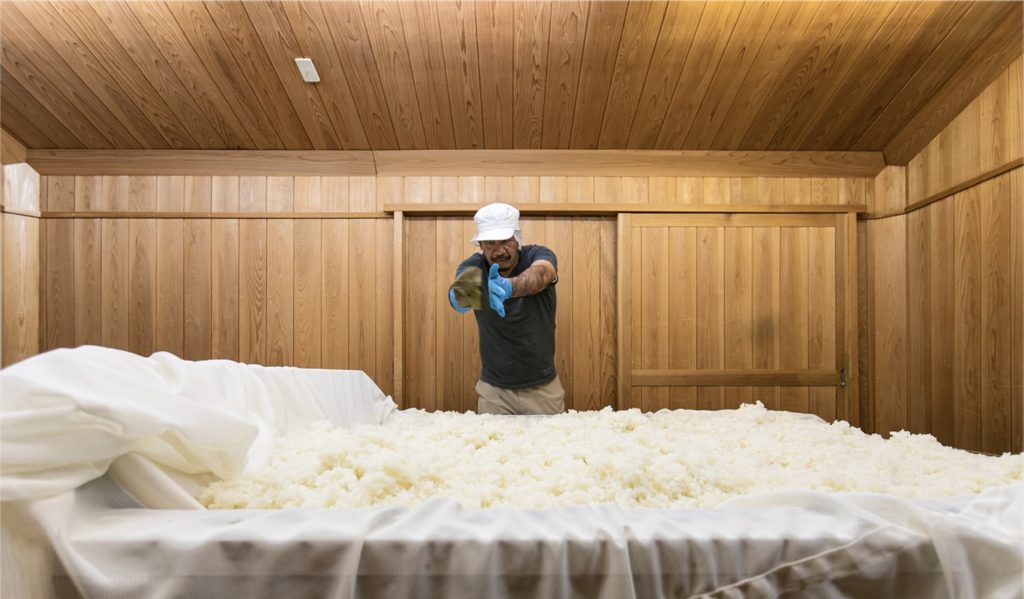The History of Nagayama Honke Shuzōjō Part 2
The Birth of Taka

Meeting Sake-Show Yamada
Discovering the Potential of Junmai
Now I, Nagayama Takahiro, am the fifth generation head of my family sake brewery, which I first joined in 2001. I saw from my childhood how people were slowly drifting away from sake, and eventually I myself began to drift away from the family business.
I spent two years studying abroad to prepare for work far removed from the brewing industry. After I returned to Japan, though, I saw the terrible situation our sake brewery was in, and I set about using what I had learned to raise capital.
As I did, I began to think perhaps there was something more I could do myself to help turn things around, and before I knew it I had begun studying to become a tōji at Hiroshima’s National Research Institute of Brewing (NRIB). I wanted to make junmai sake, made only with water, rice, and kōji, but that was a rare thing. At the time, 95% of sake on the market added brewer’s alcohol after fermenting, and only 5% of sake made was junmai. I was unsure if I could sell it.
That was when I first encountered Yamada, the owner of sake shop Sake-Show Yamada, in Hiroshima city. Yamada was well versed in the junmai market, and helped me consider how best to approach sake brewing to break into it. “There’s a market for you, as long as you make good sake,” he said, and my heart began to race. Nagayama had already established its style and its reputation. What kind of changes could I bring? I felt had finally caught a glimpse of the possibilities.

Sake Brewing and Wine
Meet at Last
A primary line of study while I was at the NRIB was main ingredients: rice for sake, and grapes for wine. After our classes, random groups of students would gather, and we would sip wine that someone had brought. This helped reveal to me just how strong a position wine had as the world’s fermented drink, and as I learned about the basis for that strength, I found myself growing convinced that junmai was the way forward for the sake brewing industry. Little by little, I was developing a plan for making sake.
At that same time, Tokyo’s sake world was buzzing with talk about Yamagata prefecture’s Jūyondai, a label that is still wildly popular and highly respected. The originality and vitality their president Takagi brought to the work was like a ray of hope in the industry, and it brought me an even greater sense of optimism.

To Become a Tōji,
and the Birth of Taka
With the vague plan born during my studies at the NRIB, I studied sake brewing for three years under a tōji named Miyagi, who had been in charge of revered Yamaguchi sake label Yakushima. A year after that study ended, I finally completed my first batch of sake as an independent tōji. I received immense help in those early days from Nonaka Shūji, who had made the highly regarded Shūhō Bijin sake at Nagato city. His teaching helped me create the kind of sake I wanted to make, and it is no exaggeration to say that even today, my sake making is Nonaka style.
The next step was figuring out how to get it onto the market. I asked advice from Yamada-san, and he recommended 貴, Taka. His reason was that single character sake labels came across as more elegant. I took his advice, naturally, and it has shown to be well given. Thus, with help from many unexpected directions, Taka was born and found itself on store shelves at junmai sake specialty shops. In 2003 it was even awarded first place as Local Hidden Gem by dancyu magazine.




